Automation blog
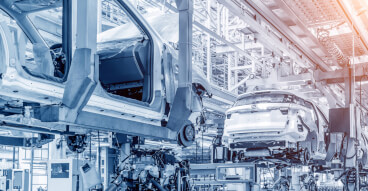
Discover the Power of Flexibility: Navigating Complexity in the Automotive Industry
08 January, 2024 In the dynamic landscape of the automotive industry, adaptation is the key to success. Just as engineers refine vehicles for optimal performance, manufacturers must streamline their operations to navigate the challenges of an ever-evolving market. Embracing flexibility has become a strategic imperative for automakers striving to customise products, boost output, and meet the specific demands of diverse market segments.Uncover the secrets to enhancing throughput and slashing time-to-market while swiftly responding to shifts in demand. While there are costs associated with flexibility – from equipment investments to a slight reduction in throughput during product changeovers – these pale in comparison to the potential expenses incurred by producing unsold vehicles or maintaining idle production lines.Our whitepaper delves into the latest flexible manufacturing trends shaping the automotive industry. Explore effective strategies for overcoming common challenges associated with implementing flexibility, including:
What’s in store for automation in 2024? Six predictions from OMRON Europe
13 December, 2023 The succession of shocks over the last few years has heralded a new era of heightened geopolitical and economic risk. This is prompting manufacturers to build resilience and flexibility into business models and rethink global supply chains and relationships. At the same time, pressure is mounting to incorporate ESG principles into operational decision making. AI, data science, digital twins and sensing, monitoring and vision technology will all be essential to developing automation and control solutions that can help the manufacturing industry adapt to this new reality. In this context, I would like to share the top six trends that will impact and shape industrial automation in 2024 and beyond.
EV transition made easy: Top three challenges to overcome in automotive manufacturing
23 November, 2023 The transition to electric vehicles is a challenging path for automotive manufacturers. Long-established companies that have traditionally produced vehicles with combustion engines are now venturing into an entirely new realm of vehicle platforms. Let us investigate the top challenges facing the electric vehicle manufacturing industry and explore the latest innovative solutions on the horizon.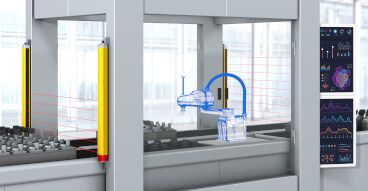
A meeting of minds: IT/OT convergence in industrial automation
22 September, 2023 Future-focused manufacturers are edging closer to their ideals of flexible, efficient and sustainable production by exploring digital transformation in earnest. However, as interest in digitalisation builds, it is becoming apparent that a huge gulf exists between the worlds of OT (Operational Technology) and IT (Information Technology). And this divide needs to be bridged if today’s visions for factories of the future are to become tomorrow’s reality.But before we look at why a convergence of IT and OT is necessary and how this can be achieved, let’s take a step back to basics and clear up some misunderstandings around the terminology.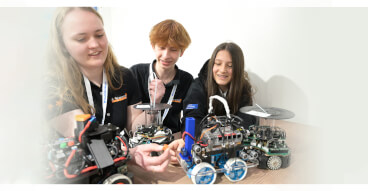
Empowering the workforce: OMRON's approach to skills development in European manufacturing
06 September, 2023 Delving into OMRON's unwavering commitment to nurturing skills that empower the next generation, while the industry embarks on a transformative journey – a journey that unlocks the full potential of the Fourth Industrial Revolution (4IR) while boldly moving towards the Fifth Industrial Revolution (5IR).In the halls of academia, the boardrooms of visionary business leaders, and the chambers of forward-thinking politicians, a fervent debate evokes. It revolves around the profound shift from the Fourth Industrial Revolution, 4IR, or Industry 4.0 as it is also known, to Industry 5.0 will change the world in which we live.Historically the Industrial Revolution was the First Machine Age, and electricity the Second, then electronics was the Third, and the internet as platform the Fourth Machine Age. We are now entering the Fifth Machine Age, which highlights harmonious human-machine collaboration and the contributions of the industry to society. This is the moment to not only adapt but to lead, to pioneer, and to create a future where innovation knows no bounds. Klaus Schwab, the founder and executive chairman of the World Economic Forum has observed that: “We stand on the brink of a technological revolution that will fundamentally alter the way we live, work, and relate to one another. In its scale, scope, and complexity, the transformation will be unlike anything humankind has experienced before. Our world is undergoing a transformative shift. Global production is evolving, driven by the automation of traditional industrial practices through smart technology, M2M communication, and IoT integration. This synergy fuels heightened automation, seamless communication, and intelligent machines that autonomously analyse and diagnose challenges.The rise of AI sparks debates, hinting at deeper transformations within our societal tapestry. As we navigate this dynamic landscape, we are poised to embrace innovation and reshape our future.
Top 4 Ways to Tackle Labour Shortage with Automation
06 September, 2023 Automation is a pathway to supporting manual workforce and not replacing them.Labour shortages in manufacturing are a growing cause of concern worldwide. While financial incentives and targeted workforce qualifications have been used as countermeasures, more innovative solutions are needed. Many manufacturers choose to automate repetitive activities but to what extent is it supporting the existing taskforce or is it taking away their jobs altogether?In 2023, Reuters disclosed an alarming trend: a record-high 53% of companies grapple with hiring difficulties. Staff shortages, soaring energy costs, combined with the pursuit of climate neutrality create new challenges. In the quest for sustainable manufacturing, innovative strategies to address labour gaps and enhance existing talent are the beacon of progress.Let us go over the top four ways to addressing the labour shortage and supporting the current workforce with automation: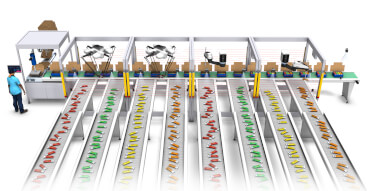
Easy programming
21 June, 2023 Omron Automation robotics are designed to be easy to program, even for users who have little or no experience with robotics. The robots can be programmed using intuitive software, and they can be taught new tasks through a simple "teach and playback" process. This makes it easy for manufacturers to integrate robotics into their production processes and improve their Pick & Place operations. With easy programming, manufacturers can reduce the learning curve and training time for operators, allowing them to get up and running quickly.
High-speed and precision movements
14 June, 2023 Omron Automation robotics are designed for high-speed and precision movements, which make them ideal for Pick & Place applications. The robots can pick up and place objects quickly and accurately, reducing cycle times and increasing productivity. Omron robots can move at high speeds without sacrificing precision, which is essential for Pick & Place applications where objects need to be placed in precise locations. With Omron Automation robotics, manufacturers can improve their production efficiency.Pick & Place applications are a common task in industrial settings, where objects need to be moved from one place to another quickly and accurately. This can be a repetitive and time-consuming task that can be automated using robotics solutions. In this blog post, we will explore how robotics can help with Pick & Place applications and improve productivity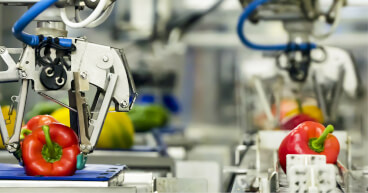
Flexible configurations
07 June, 2023 Omron Automation robotics can be configured in a variety of ways to suit different Pick & Place applications. The robots can be mounted on a fixed base or on a mobile platform, and they can be equipped with different end effectors to handle a wide range of objects. With Omron Automation robotics, manufacturers can customise the robots to meet their specific needs, allowing them to handle objects of different sizes, shapes, and weights.
From red lights to robots: OMRON celebrates 90 years of innovation
06 June, 2023 This year on Founder’s Day, OMRON looked back on 90 years of pushing technological boundaries, and looks forward to a future of automation innovation framed by sustainability, digitalisation and human-machine collaboration.May the 10th be with you… Every year, 10th May is probably the most important day in OMRON’s calendar. On this day, 30,000 OMRON employees around the world celebrate the life and legacy of the company’s founder, Kazuma Tateishi. They do this by recommitting to Tateishi’s vision of using technology to create a better world and by giving back to society - often by participating in volunteer and charity projects in their communities. Innovation Milestones OMRON's journey of innovation began in 1933 with the development of a high-precision timer for X-ray photography. This marked the company's first contribution to addressing societal needs. In 1960, OMRON unveiled the world's first non-contact proximity switch, revolutionizing advanced mass production capabilities. Since then, OMRON has continued to introduce groundbreaking technologies, including the first automatic traffic signal, unmanned train station system, wearable blood pressure controller, ultra-high-speed fuzzy logical controller, and automatic cancer cell diagnostic equipment.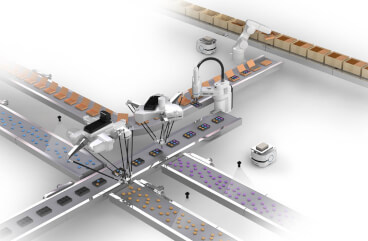
Collaborative capabilities
31 May, 2023 Omron Automation robotics can be used in collaborative applications, where they work alongside human operators to pick up and place objects. The robots are designed to be safe to work around, with sensors and other safety features that prevent collisions and other accidents. This allows manufacturers to use collaborative robotics in a wide range of applications, improving productivity and efficiency while maintaining a safe work environment. With collaborative capabilities, manufacturers can take advantage of the benefits of automation while still maintaining a human touch in their production processes.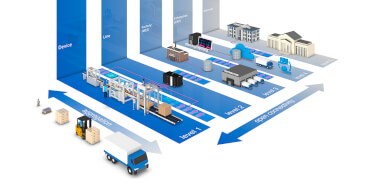
Transitioning from manual record keeping to fully automated traceability
11 May, 2023 In the fifth and final blog in this series on Traceability we will discover how machine vision technology has been taking on an increasingly important role in traceability because thanks to its effective way of maintaining complete product integrityVision inspection includes a wide variety of functionality such as detecting defective products in real time and performing both OCR and OCV to verify that the data on labels and packages adds up. By functioning as a complete solution for ensuring that non-conforming products don’t go out into the market, vision systems are vital for brand protection.The hurdle that manufacturers face in implementing a machine vision system is twofold. Such systems are often expensive to implement, and the complexity of the technology can overwhelm operators. Many applications require special programming. However, these challenges are offset by the fact that a single product recall or fine for tainted product – preventable by a vision system – could cost more than the vision system itself.The avoidance of unwanted complexity isn’t just a deterrent to using machine vision – it’s often a reason why manufacturers forego upgrading their traceability systems in any way. Because implementing a new system seems inordinately complex, many manufacturers prefer to stick with cumbersome and error-prone record keeping methods that rely on manual processes. It’s understandable that companies want traceability to be easy. However, failing to upgrade the system with automation actually leads to more work in the long run.Manual record keeping is far more widespread in the food and beverage packaging industry than it should be, especially when one considers the huge costs associated with certain types of mistakes. Unfortunately, not all companies have the budget to invest in good traceability software. Budgetary constraints and the fact that traceability solutions need to be scalable are major barriers to automating the system.OMRON strives to make traceability as easy as possible, just as it strives to make its machine vision technology intuitive enough for the average operator to use. Its MicroHAWK barcode readers keep things simple by working right out of the box – in fact, the browserbased WebLink interface allows manufacturers to start using the readers without needing to install any software whatsoever. OMRON also has extensive knowledge of how traceability works in a variety of industries, and its focus on providing comprehensive solutions with complete line integration lets companies rest assured that the upgraded system will “just work.”Although often perceived to be challenging and somewhat expensive at the outset, a robust traceability system is the single most important means of complying with industry regulations and reducing the incidence and cost of recalls. OMRON’s traceability solutions address various pain points that manufacturers face in the food and beverage packaging industry so that real-time, automated traceability is within the reach of any company that needs to comply.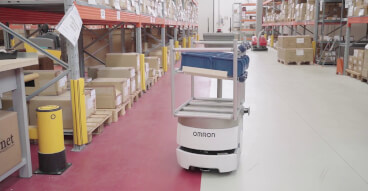
FasThink optimizes Garnet's intralogistics with mobile robots
02 November, 2021 Garnet relies on FasThink to innovate its logistics and production processes.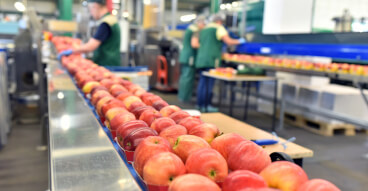
Automation and the human touch
27 October, 2021 Ensuring products are sorted correctly and placed in the correct orientations are critical functions when preparing food and other consumer goods to be packaged and ready for consumption. Imagine if a multipack of peppers had 3 green ones; or if a pack of pancakes had 2 missing because they were outside of the range of the flow-wrapper. Doubtless, we wouldn’t be too happy. Even worse, we can’t get hold of the products we want because there is a large scale shortage…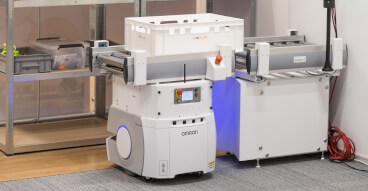
Intelligent System Solutions with Autonomous Mobile Robot: AM-Flow and OMRON
27 October, 2021 Industry 4.0 brings the promise of streamlined processes, big data insights and production lines running 24/7 with zero downtime. Unlike historical ‘industrial revolutions,’ this one offers the luxury of time and choice for manufacturers. That’s because the benefits of automation can be embraced incrementally or fully, whether it’s a new state-of-the-art facility or something retrofit-installed into a more traditional production setup. Making it easier to make the move is AM-Flow, an entrepreneurial start-up currently making waves in providing its solutions to the new tide of producers coming ashore in the world of additive manufacturing.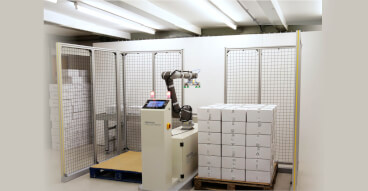
How the RB1200 Cobot Palletiser can transform your businesses’ labelling needs
17 September, 2021 For many businesses, the logistics of transferring large amounts of inventory around their facility is a significant headache. Everything has to be labelled and organised to ensure it gets sent to the correct location for use, storage, or shipping. Even minor errors during the labelling process reduce efficiency and can potentially compound to create costly mistakes. The job itself is not a desirable one, though. Human beings are not best suited for repetitive tasks whilst staying alert and maintaining concentration to ensure mistakes don’t occur. This is, however, a task tailor-made for automation.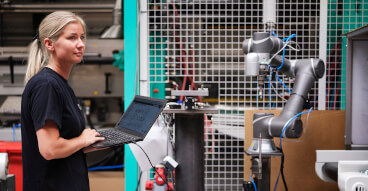
Unika makes Landmark decision to bring quality levels to new heights
25 August, 2021 OMRON TM cobots with integrated vision system eliminate human error, increase production efficiency.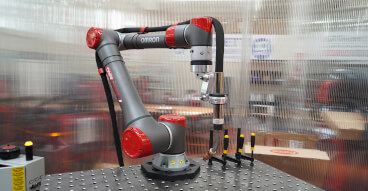
Flexible, safe and easy collaborative welding solution from Guidetti Technology
20 August, 2021 Guidetti Technology SRL has integrated OMRON collaborative robots (cobots) into its ‘EasyArc’ welding solution. This is used in collaborative applications on small batches of various types of metal carpentry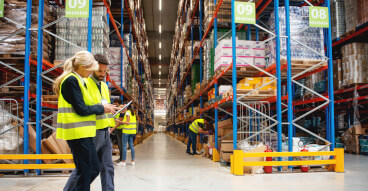
How labour shortages are affecting the logistics sector and why automation is the solution
11 August, 2021 By Stuart Coulton, Regional Manager, OMRON UK North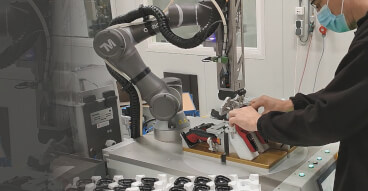
Professional help for personal care: Putting a cobot to work
09 July, 2021 Of the many processes involved in finalising a consumer product, the final step can often be the most intricate. For this OMRON customer, the last step in production is to fasten the cover holding screw, closing up the unit—in this case, an electric shaver. Traditionally, the full process was completed manually, with an electric screwdriver in a multi-step process. This repetitive task is an ideal candidate for the help of an OMRON cobot.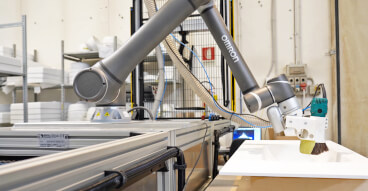
Cobot boosts production by 15% at Topcustom
23 June, 2021 Topcustom srl, an Italian producer of custom-made bathroom sinks, has recently transformed part of its operations by deploying a collaborative robot (cobot) from OMRON. The new cobot is being used to automate all the finishing operations of Topcustom’s products made from Ocritech. This is a light material that is easy to work, guarantees perfect hygiene and has excellent resistance to UV rays.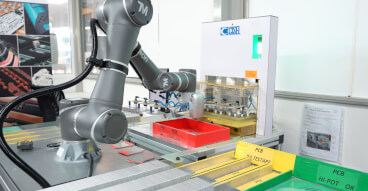
Cisel ensures traceability, safety and quality by testing printed circuit boards with a cobot
17 June, 2021 Cisel is an Italian company that specialises in the design and production of flexible printed circuit boards (PCBs) for the automotive, civil engineering and manufacturing industries. The company recently chose an OMRON TM5 collaborative robot (cobot) to automate the electrical testing of boards used in the power steering system of a leading automotive manufacturer.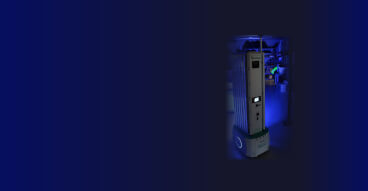
UV-C Robot helps businesses win the fight against Covid
16 June, 2021 As the UK’s customer-facing businesses plan their reopening strategies, keeping consumers and staff safe from Covid will be a key priority. In a bid to prevent future outbreaks at high footfall, everyday environments like supermarkets, bars and gyms, we have teamed up with UV Systems UK to produce an autonomous robotic sterilisation system that guarantees to kill the virus without damage or harm to surrounding goods.
Cobot ensures precise assembly of magnets for LITMAT’s drain plugs
03 June, 2021 Collaborative robots (cobots) are being used more and more extensively, in a range of different industries and across a wide variety of applications. They can make a significant difference to the efficiency and productivity of the production cycle. One company that is enjoying such benefits is LITMAT SpA.
Traditional factories have data needs too
18 March, 2022 The right tools and tech can enable advanced predictive maintenance, bottleneck prevention and optimization. Find out how digitalization is bridging the gap between legacy systems and Industry 4.0.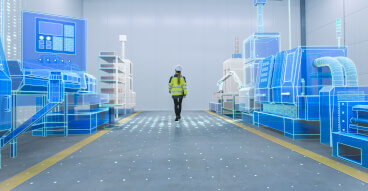
Productivity Peaks: Moving Maintenance From Preventive to Predictive
17 December, 2021 Maintenance is a vital key to a thriving business, especially in manufacturing where 24/7 plant equipment uptime is often expected as standard. As any established enterprise knows, keeping production lines and systems running optimally requires more than a skilled maintenance team. It also involves careful planning, tight scheduling, constant vigilance, a willingness to change out unworn parts, and a readiness to respond to unplanned events. At least, it used to.
Developing digital capability: how any factory can be smart
16 September, 2021 Thankfully, the headline-grabbing ‘Industry 4.0’ isn’t reserved exclusively for the high-tech giants that span the globe, nor is the term ‘smart factory’ applied only to brand-new installations. In truth, any traditional factory can in principle take steps on the smart factory journey, by applying modularity to the existing installation.
Monitor machine stability with data science
16 July, 2021 Do you have a machine with no problems? You’re probably already collecting production and machine data, but not using it. With a quick scan of your data, it is possible to judge the usability and quality of the data and start using the value inside the data. This will help you define the first or next step towards a data enabled organization.
Cobot Dashboard: How to visualize data for OEE improvement the smart way
16 March, 2021 The factory of the future is not only based on a well-orchestrated interaction of the most diverse machines, robots, sensors, and AI technologies. Entrepreneurs and decision-makers are also increasingly faced with the challenge of reconciling the vast amounts of data collected by the various production lines and making the best possible use of it to support their decisions. Not only does a comprehensive data strategy need to be developed. There are also technologies required that process and present the data in such a way that issues are immediately identified before major problems occur.
Developing smart and flexible production: Norwegian university sets up new manufacturing lab packed with robots
10 February, 2021 The Norwegian University of Science and Technology (NTNU) has developed a new educational laboratory in Ålesund to facilitate learning and extend the implementation of automation and robotics amongst manufacturers in the region. The lab is packed with a wide range of OMRON solutions – both hardware and software.
Data paradise factory floor: get more out of your machine and production information
25 September, 2020 Strategic Data Science is an essential pillar of every Industry 4.0 scenario. A four-step data mining approach based on CRISP-DM supports successful projects.
Get the full value from your factory floor data with data sciences
19 June, 2020 Industry 4.0 and IIoT have been buzz words for several years and these concepts are actually implemented on more and more machines. A huge amount of data becomes available: machine data, data of the production process and data regarding the manufactured product. Big Data has entered the factory floor.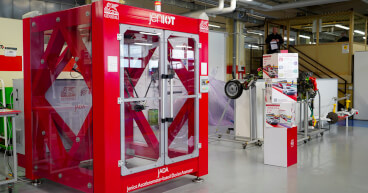
High-speed robot tests the reliability of black boxes
14 May, 2020 A non-destructive alternative to crash tests
Integrated data control, motion control and machine vision for next-generation automotive production line
24 April, 2020 The Mexican regional headquarters of a leading manufacturer of premium air brake actuators for global on-highway and specialty markets required a new automated production assembly line. One of the company’s key performance indicators is to deliver a fully assembled product every 30 seconds, and it is with this end goal at the forefront that the team started the process of automating the production line.
IoT security for manufacturers
11 December, 2019 The Internet of Things (IoT) is a recent concept, involving the connection of devices that incorporate electronics, software or sensors, with the aim of collecting and exchanging data.
Smart machines: laying the golden egg?
16 October, 2019 Greater manufacturing efficiency: it’s the golden egg we’re all looking for. But it’s getting increasingly hard to find. The solution could be smarter automation, which involves lots and lots of data (‘big data’) and data collection and data-driven modelling. The smart machine then uses the models to automatically adjust its own behaviour (i.e. machine learning).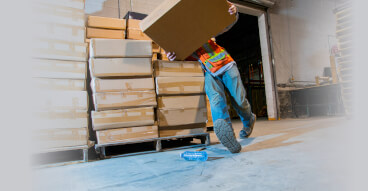
How the RB1200 Cobot Palletiser Can Simplify Your Automation Deployment
13 April, 2022 Greater automation and collaborative robotics (cobots) are the future for many industries, including logistics. Research by BMW found humans and robots work more than well together. In fact, human-robot teams were 85% more productive than working alone.It makes sense. Combining the speed and accuracy of robotics with the flexibility and intuition of humans compounds the benefits from each to build an unbeatable team.With the RB1200 Cobot Palletiser, OMRON, in collaboration with Reeco, is bringing a revolutionary new approach to end of line palletising. Creating an easy, flexible, safe, and compact solution to getting stock palletised and ready for transport.Palletising is a task perfectly suited to automation. The simple yet repetitive and physically demanding process of getting goods stacked leads to complications when performed manually. In 2019/2020, the Health and Safety Executive (HSE) estimated 19% of non-fatal workplace injuries were caused by handling, lifting, and carrying.Plus, given the labour shortages facing the UK and the wider world and the potential for spiralling staff costs, now is the ideal time to get your company less reliant on manual labour.While there are plenty of benefits to automating your palletising processes (greater output and accuracy, reduced labour and operational costs, etc.), its implementation also has challenges.However, with the RB1200 Cobot Palletiser, humans can collaborate with robotics on their terms, implementing a solution that fits their specific needs.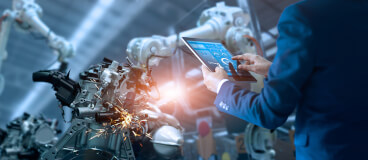
Discover How The CP1200 Case Packer Can Transform Your End-of-Line Manufacturing Processes
29 March, 2022 By Stuart Coulton, Market Development Manager, OMRON UK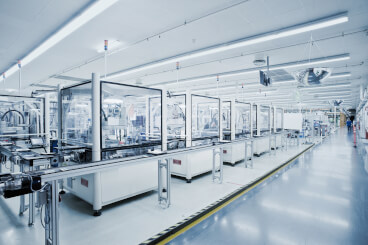
End of Line Automation: Now is the Time!!
29 March, 2022 By Stuart Coulton, Market Development Manager, OMRON UK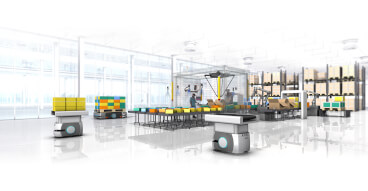
Mastering packaging and intralogistics challenges in eCommerce
24 February, 2022 Robot-assisted packaging enables fast and cost-efficient scalability upward and downward to handle swings in demands from the supply chain.
Five challenges in High-Mix, Low-Volume (HMLV) packaging and palletizing processes
21 December, 2021 The new product has just left the factory, in a shelf-ready package in the specified mixed ratio to meet customer needs. The packaging has actually been handled by another company: a co-packer. Co-packing can be found in all Fast-Moving Consumer Goods (FMCG) markets, but especially in the higher-priced product segments such as personal care or confectionery, to name a few examples. It is a fast-growing activity to satisfy the consumer demand for more variety.
Productivity Peaks: Moving Maintenance From Preventive to Predictive
17 December, 2021 Maintenance is a vital key to a thriving business, especially in manufacturing where 24/7 plant equipment uptime is often expected as standard. As any established enterprise knows, keeping production lines and systems running optimally requires more than a skilled maintenance team. It also involves careful planning, tight scheduling, constant vigilance, a willingness to change out unworn parts, and a readiness to respond to unplanned events. At least, it used to.
Finished seals in less than 10 seconds: Robotics Integrated Controller ensures harmonious control
24 November, 2021 Trelleborg Livorno has updated a robotic cell for the finishing of polyurethane gaskets for the sustainable wind energy market. The cornerstone of the solution is OMRON's Robotics Integrated Controller that ensures integration and synchronization of all automation components, including robots, logic, motion, safety and user interface.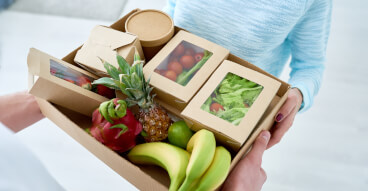
Plastics in consumer goods manufacturing: Seven automation tips for greener packaging
29 April, 2021 Hygiene or environmental protection? Preferably both! Companies in the consumer goods industry are increasingly asking themselves what alternatives they have to plastic packaging and how they can act greener, more efficiently, and yet still safely. Innovative packaging lines, robotics and artificial intelligence offer support.
Cobot Dashboard: How to visualize data for OEE improvement the smart way
16 March, 2021 The factory of the future is not only based on a well-orchestrated interaction of the most diverse machines, robots, sensors, and AI technologies. Entrepreneurs and decision-makers are also increasingly faced with the challenge of reconciling the vast amounts of data collected by the various production lines and making the best possible use of it to support their decisions. Not only does a comprehensive data strategy need to be developed. There are also technologies required that process and present the data in such a way that issues are immediately identified before major problems occur.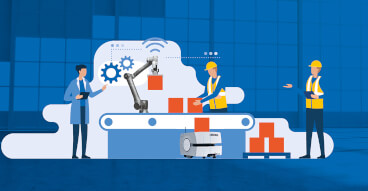
Four top tips for automation projects in the food and beverage industry
22 February, 2021 A challenge accelerated by the Coronavirus pandemic has seen producers having to juggle between longer term range proliferation centred on consumer demands, and range (SKU’s) reduction caused by retailers and consumers rapidly changing buying habits. Companies that break new ground by using innovative technologies not only gain agility but also reduce scrap, contamination risk, waste and losses.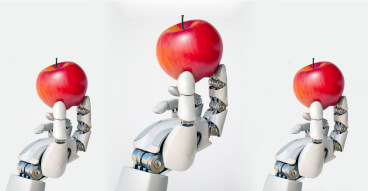
Factory automation: four tips for the future of food & beverage manufacturing
16 July, 2020 The coronavirus pandemic has posed major challenges to organisations of all types and sizes. In the food and commodity industry, companies have faced significantly reduced consumption and disrupted supply chains, while at-home consumption increased, and out-of-home consumption came near to a standstill. But how can manufacturers adapt their business strategies and production processes both now and in the longer term? The pandemic may provide an opportunity for rethinking outdated processes and procedures and enhancing them with concepts such as innovative robotics, sensor technology and holistic automation strategies.